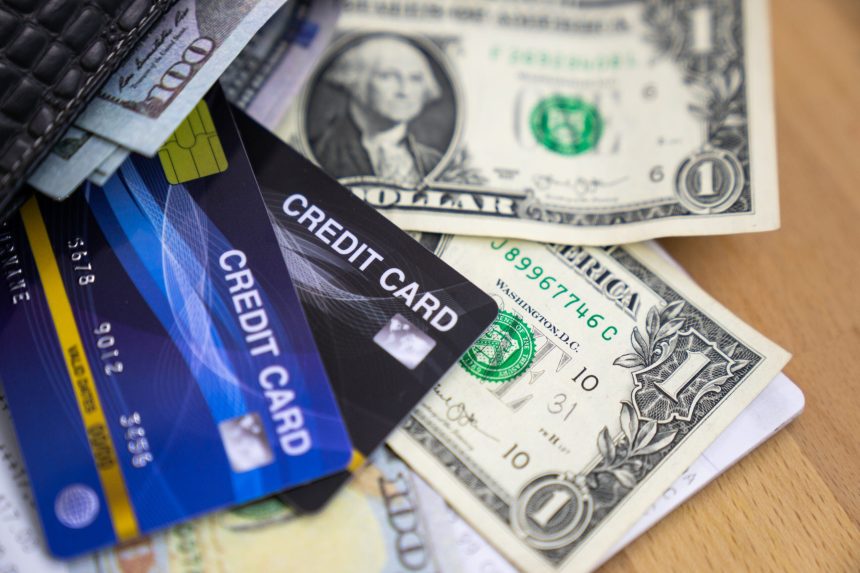krisanapong detraphiphat/Getty Images
On Feb. 13, the Federal Reserve Bank of New York will release its Quarterly Report on Household Debt and Credit. This edition will cover the fourth quarter of 2024, and I’m expecting another record for credit card balances, adding to the current record of $1.166 trillion as of Q3 2024.
Have a question about credit cards? E-mail me at [email protected] and I’d be happy to help.
Balances almost always spike in Q4
Thanks mostly to holiday shopping, credit card balances tend to swell in the October through December quarter. This particular dataset originated in 2003 and balances only fell from the third to the fourth quarters on two occasions: both during the financial crisis in 2009 and 2010. The average quarter-over-quarter increase from Q3 to Q4 is 2.43 percent, more than any other quarter.
In a typical year, credit card balances fall in Q1 (thanks largely to New Year’s resolutions to pay off debt, a post-holiday spending detox and people who use tax refund money to pay down debt). From there, balances rise in each successive quarter, peaking in Q4.
Over the 22-year history of these reports, the average quarter-over-quarter changes are as follows:
- From Q4 to Q1: a decline of 2.39 percent
- From Q1 to Q2: an increase of 1.13 percent
- From Q2 to Q3: an increase of 1.39 percent
- From Q3 to Q4: an increase 2.43 percent
There’s nothing to suggest that 2024 was any different
Holiday shopping data came in above expectations. The National Retail Federation reported that holiday sales rose 4 percent from November/December 2023 to November/December 2024. Mastercard and Adobe measured similarly robust holiday sales figures.
Credit card balances reflect more than just retail sales, of course, but it’s hard to imagine credit card balances defying a decades-long trend of rising in the fourth quarter at a time when holiday sales were so strong. It’s also relevant that the Federal Reserve Bank of Philadelphia recently revealed that credit card users making only minimum payments are at a series high (dating back to 2012). That represents the uglier side of rising credit card balances.
While credit card balances generally rise over time because of economic growth, population growth and the continued migration away from cash toward digital payment methods such as credit cards, balances have also risen (especially lately) because Americans are having a harder time paying down their balances.
Inflation and high interest rates are a nasty combination
Bankrate’s Wage to Inflation Index found that prices rose an average of 20 percent from Q1 2021 through Q2 2024, while wages only expanded by an average of 17 percent. Many households have filled that gap by dipping into their savings and/or taking on debt. In fact, 48 percent of credit cardholders carry debt from month to month, according to Bankrate’s Credit Card Debt Survey, up from 39 percent in a late 2021 survey. And most of these credit card debtors (53 percent) have had credit card debt for at least a year. An average credit card rate of 20.13 percent (only down slightly from a record 20.79 percent set last summer) makes it even harder to knock out your credit card debt.
There are ways to break the debt cycle
My favorite credit card debt payoff tip is to sign up for a balance transfer credit card with a generous introductory 0 percent interest term. Some of these last as long as 21 months. The average credit card balance ($6,380, according to TransUnion) feels daunting, but consider this: By using a balance transfer card, you would only need to shell out a little over $300 per month to pay off the entire amount over 21 months and you wouldn’t owe any interest (this calculation even accounts for the typical 3 to 5 percent balance transfer fee).
One of my favorites is the Citi Simplicity® Card. It offers new customers an introductory 21-month interest-free term on balance transfers (made within four months of opening the account) and 12 interest-free months on new purchases. After the term ends, the ongoing APR is 18.24% – 28.99% (Variable). There is an intro balance transfer fee of 3% of each transfer (minimum $5) completed within the first 4 months of account opening.
The Wells Fargo Reflect® Card is another good one. Its intro 0 percent term lasts for 21 months on new purchases and balance transfers (those qualifying balance transfers must be made within 120 days of opening the account). After that, a 17.24%, 23.74%, or 28.99% Variable APR applies, based on your creditworthiness. The balance transfer fee is 5%, min: $5.
You generally need good to excellent credit to qualify for the best balance transfer cards (that often means a credit score of 670 or better, but your mileage will vary). If you have a lower credit score or a lot of debt (more than, say, $5,000 or $6,000), a balance transfer card might not be the best approach for you. You might not be able to qualify, or you might not get a high enough limit to transfer all of your debt.
In these circumstances, I’d suggest working with a reputable nonprofit credit counseling agency such as Money Management International or GreenPath. They often offer debt management plans with something like a 7 or 8 percent interest rate over four or five years. Other strategies include taking on a side hustle, selling unneeded possessions and cutting your expenses.
The bottom line
Credit card balances are at record highs and credit card rates are close to record levels. Credit card debt is the highest-cost debt for millions of American households. If you only make minimum payments toward the average balance ($6,380) at the average rate (20.13 percent), you’ll be in debt for 18 years and will end up paying about $9,300 in interest. It’s critical to come up with a plan to pay off your credit card debt as quickly and cost-effectively as possible.
Read the full article here
















